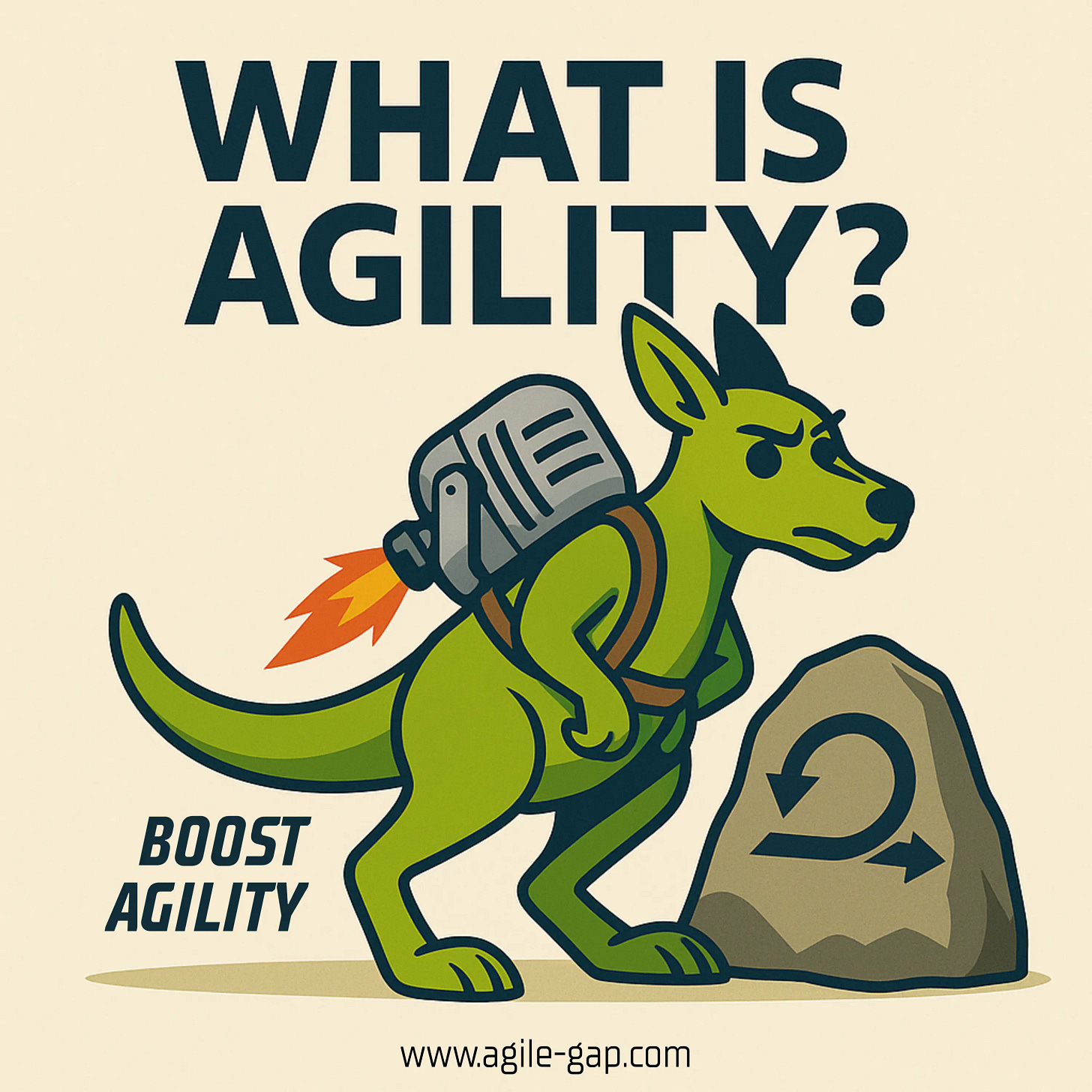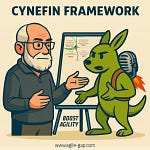Introduction: Why Agility Matters More Than Ever
In today’s fast-changing world, agility isn’t a luxury—it’s essential. Whether you lead a Scrum team or drive business strategy at the C-level, agility helps you respond to change, deliver value faster, and stay aligned with customer needs.
But agility is often misunderstood. It's not just about working faster—it's about responding with purpose. This article will break down what agility means and how you can assess and apply it at both the team and organization levels.
What Is Agility?
Agility is the ability of a team or organization to respond quickly and effectively to change—while delivering value continuously to customers.
Agility Includes:
Adaptability: Changing direction when needed
Frequent delivery: Producing valuable results in small steps
Fast learning: Inspecting and improving continuously
Collaboration: Working closely across roles and with customers
Value focus: Delivering outcomes that matter—not just outputs
Note: Agility is not just speed. It’s purposeful flexibility with a clear focus on value.
Team-Level Agility: What It Looks Like
An Agile team isn’t just following Scrum or Kanban—they’re living the principles. Here's what real agility looks like in action:
Signs of a Truly Agile Team:
Delivering working product increments every 1–4 weeks
Adjusting plans based on customer feedback
Collaborating cross-functionally—developers, testers, designers, and the Product Owner
Running regular retrospectives and implementing improvements
Focusing on customer value, not just story points or tasks
Example:
A Scrum Team updates a health-tracking app every Sprint. They adapt their Sprint Backlog based on user feedback and improve their process through retrospectives.
Organization-Level Agility: What It Looks Like
At the organizational level, agility is about strategic adaptability, customer-centricity, and empowered teams working toward shared goals.
Signs of an Agile Organization:
Quickly shifting strategy in response to market changes
Teams aligned around business outcomes, not isolated projects
Decisions made close to the work—not top-down micromanagement
Data-driven prioritization using tools like EBM or OKRs
Structures that reduce handoffs, silos, and delays
Example:
A company uses SAFe to coordinate multiple Agile Release Trains around strategic goals and adapts its product roadmap based on real-time market feedback.
How to Assess Agility at the Team Level
Use these 5 practical dimensions to evaluate your team's agility:
1. Value Delivery
Are valuable increments delivered at least once a month?
Is customer feedback visible and acted on?
2. Responsiveness
Can the team adjust mid-iteration?
Are feedback loops short and effective?
3. Collaboration
Are roles cross-functional and responsibilities shared?
Is there daily teamwork and shared ownership?
4. Continuous Improvement
Are retrospectives frequent and meaningful?
Are action items followed through?
5. Transparency
Is the backlog clear and prioritized?
Are stakeholders aware of goals and progress?
Tools: Scrum Values, Team Health Checks, Team Kanban Maturity Model
How to Assess Agility at the Organizational Level
Ask these 5 key questions to uncover agility across the enterprise:
1. Strategic Adaptability
Can we change direction rapidly?
Are decisions made where the work happens?
2. Customer Centricity
Is customer feedback driving priorities?
Do we measure outcomes over activity?
3. Coordination and Flow
Are delays and dependencies minimized?
Are teams aligned around shared goals?
4. Cultural Support
Do we reward learning and experimentation?
Is failure seen as feedback?
5. Systemic Improvement
Are processes regularly reviewed?
Is improvement visible from teams to executives?
Tools: Evidence-Based Management (EBM), SAFe Business Agility Assessment, AgilityHealth Radar
Real-World Example: Scrum Team Agility Assessment
Context: A Scrum Team develops a health-tracking app. A coach assesses their agility after 6 months of practice.
Scrum Values Review:
Commitment: Team finishes most work
Focus: Vague goals reduce focus
Openness: Fear around delays
Respect: High team support
Courage: PO avoids stakeholder tension
Actions to Improve:
Bring real users to Sprint Reviews
Clarify and reinforce Sprint Goals
Follow through on retrospective actions
Coach the PO on courageous stakeholder conversations
Real-World Example: Organization-Level Agility Using EBM
Context: A software company wants to measure its agility beyond just "doing Scrum."
EBM Dimensions and Findings:
Current Value (CV)
Only 40% of features used
Feedback mostly from support tickets
Time to Market (T2M)
90 days from idea to release
Monthly delivery cadence
Ability to Innovate (A2I)
Rigid codebase and manual testing
Only 10% of time spent on new ideas
Unrealized Value (UV)
Untapped market segment with 30% potential value
Internal priorities drive roadmap
Actions to Improve:
Automate to speed up delivery
Gather direct customer feedback
Re-prioritize backlog based on customer value
Conclusion: Agility Is a Behavior, Not Just a Buzzword
Agility isn’t about using Scrum or releasing faster—it’s about learning, adapting, and delivering value continuously.
At the team level, inspect how frequently you deliver, collaborate, improve, and respond.
At the organization level, inspect how quickly you adapt strategy, enable teams, and align around outcomes.
Agility is measurable, coachable, and improvable—when you assess the right things.








